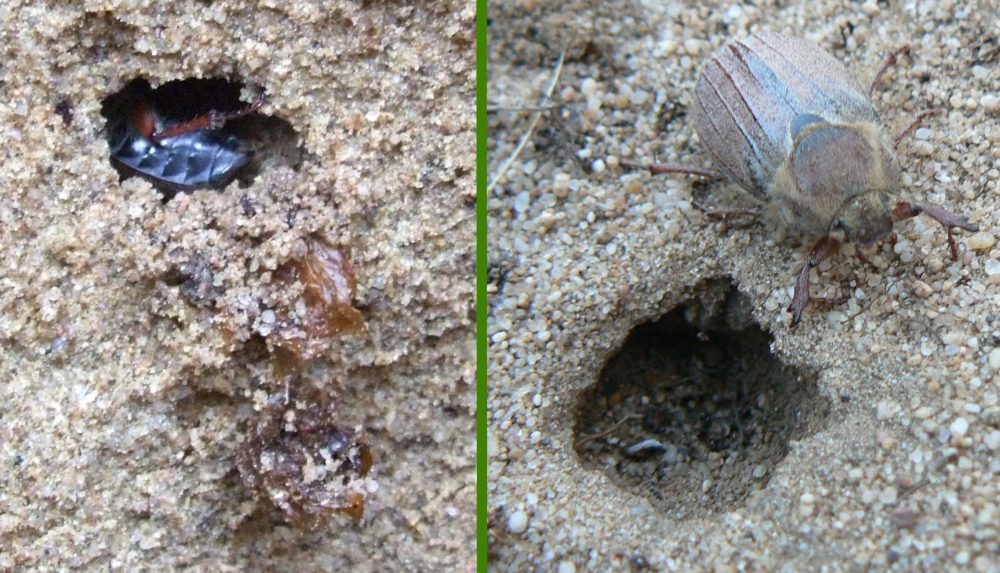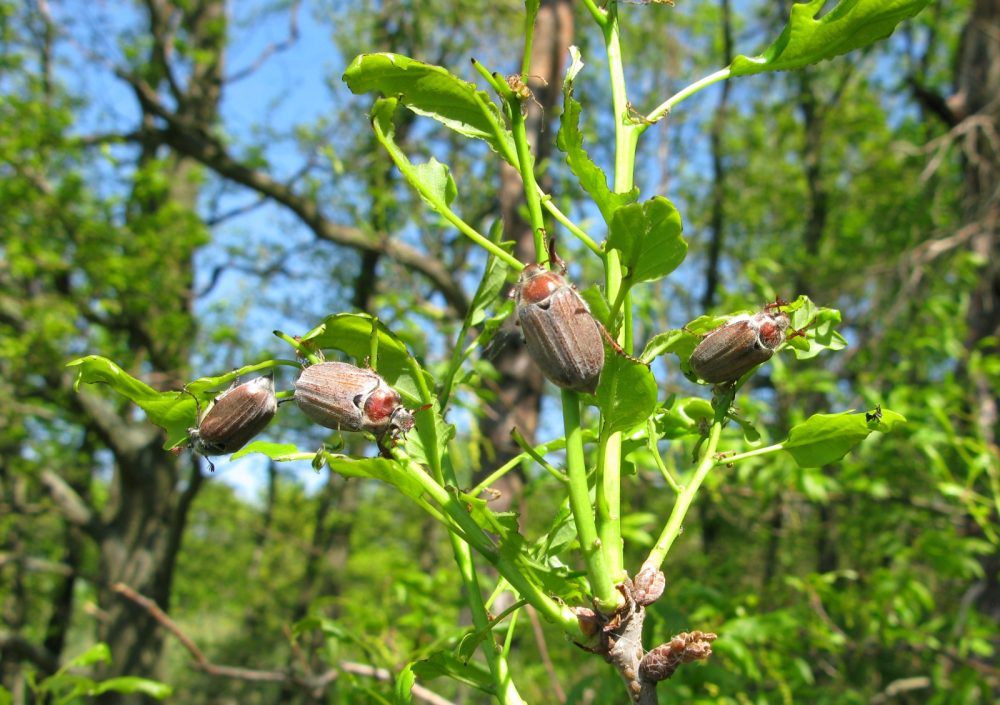The forest cockchafer begins to swarm when the birches sprout
Since the mid-80s of the 20th century, white grubs of forest cockchafer have caused significant damage in some areas of our forests. The size of the threatened area is roughly 10,000 hectares, and annual losses in the planting of regenerated stands are reaching 50–300 ha. Due to the extent of the renewed calamity clearings, the importance of this pest will be increasing. Therefore, for the practical forest protection, it is important to know well its life cycle and the possibilities of protection against this pest.
The Forest Cockchafer is an important polyphagous forest pest (it has a very wide range of host species that are mutually unrelated), that causes defoliation of deciduous trees in the adult stage. Its white grubs damage the roots of seedlings and emerging cultures of forest tree species, but also the roots of mature trees used to be damaged, as well.
Problems connected with protection against this forest pest, it was subject of interest of research scientists from the Mendel University in Brno. Theirs findings were published in the paper Hibernace imag chrousta maďalového v podmínkách nížinných borů Česka /Hibernation of Forest Cockchafer adults in the lowland pinewood of the Czech Republic/, Reports of Forestry Research 3/2022.
 Photo: Location of the hibernating imagoes Melolontha hippocastani in the chamber with the rest of the pupa exuvia (left) and the climbing hole in the soil surface (right) (Bzenec locality); author: Emanuel Kula
Photo: Location of the hibernating imagoes Melolontha hippocastani in the chamber with the rest of the pupa exuvia (left) and the climbing hole in the soil surface (right) (Bzenec locality); author: Emanuel Kula
According https://en.wikipedia.org/wiki/Cockchafer, adults appear at the end of April or in May and live for about five to seven weeks. After about two weeks, the female begins laying eggs, which she buries about 10 to 20 cm deep in the earth. She may do this several times until she has laid between 60 and 80 eggs. The Forest Cockchafer stays in the vicinity of the trees. The preferred food for adults is oak leaves, but they will also feed on conifer needles.
The larvae, known as “white grubs” or “chafer grubs”, hatch after four to six weeks. They feed on plant roots, for instance potato roots. The grubs develop in the earth for three to four years, in colder climates even five years, and grow continually to a size of about 4–5 cm, before they pupate in early autumn and develop into an adult cockchafer in six weeks.
The cockchafer overwinters in the earth at depths between 20 and 100 cm. They work their way to the surface only in spring.
Because of their long development time as larvae, cockchafers appear in a cycle of every three or four years; the years vary from region to region. There is a larger cycle of around 30 years superimposed, in which they occur (or rather, used to occur) in unusually high numbers (10,000s).
The Forest Cockchafer occurs in the localities close to the Labe River and in the area of south-east Moravia, including neighbouring the Slovak Záhoří area.
The level of gradation of the Forest Cockchafer is characteristic in the forest stands in the area of Strážnicko, the South Moravian Valley Natural Forest Region. There is the climate characterized by a very long and dry summer, in this area. The average annual temperature reaches 9.3 °C and the average annual rainfall is 450 mm. The Bzenecká doubrava area (180–222 m above sea level) consists of extensive platforms of soft sand with overburden mounds up in thickness to 30 m.
In this natural forest region, damage caused by beetles in crops and natural rejuvenation are limiting factors for forest regeneration, in parallel with the climatic conditions.
 Photo: Maturation feeding of adult cockchafer; author Jan Liška
Photo: Maturation feeding of adult cockchafer; author Jan Liška
The second cockchafers‘ gradation area is the Nymburk neighbouring area in the Polabí Natural Forest Region. There occurs long-term significant damage caused by cockchafers‘ larvae, which makes natural and artificial forest regeneration difficult. The average annual rainfall is 550–600 mm and the temperature is 8–9 °C, which places this area in a warm area, altitude 190–250 m. There are sandy terraces and wadding sands with original pine forests.
Research scientists‘ findings:
Cockchafers‘ larvae of future male adults pupate earlier then cockchafers‘ larvae of future female adults. Regarding this, male adults hatch earlier. Part of hatched cockchafers descends to deeper depths for the wintering.
Cold tolerance in both males and females is influenced by the weight of the wintering individuals. The average weight of wintering males was significantly lower than that in case of females. The freezing temperature leading to killing the males decreased statistically significantly with the higher weight of the adults.
Males hibernate at lower depths than females, which is related to their higher tolerance to low temperatures. Hibernating males start coming to the surface from January, females from February, at soil temperatures even below 5 °C.
The delayed (cold) start of spring time reduces the difference between the male and female appearing. Both sexes are found in the subsurface soil layer and appear simultaneously. In spite of this, there are up to 30% more males than females in April.
On the sandy soils of the „Moravian Sahara“, the dominant layer with wintering cockchafers was 20–60 cm (81%), and their occurrence was deeper than 80 cm was < 1%.
Observed starts of swarming show the necessity of reaching air temperatures >10 °C and soil temperatures >7 °C, for a period of 7–10 days.
For a practical forester, it is possible to identify the birch sprouting as the simple indicator of beginning of the swarming of the Forest Cockchafer, while the main food trees (hornbeam, oak) sprouted later.
The research assignment was realized with the support of the LČR Grant Service Project „Possibilities of decreasing of damages caused by the Forest Cockchafer in the area of Forest District Strážnice“.
Author of paper: Emanuel Kula, Mendel University in Brno, Faculty of Forestry and Wood Technology, Department of Forest Conservation and Wildlife Management, e-mail: kula@mendelu.cz
Paper „Hibernation of Forest Cockchafer adults in the lowland pinewood of the Czech Republic“ is possible to be downloaded here.
Prepared by Ing. Jan Řezáč, FGMRI, e-mail: rezac@vulhm.cz
